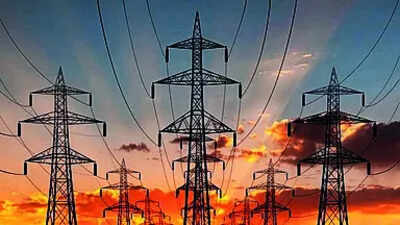ARTICLE AD BOX

CHANDIGARH: The Punjab and Haryana high court has issued notice to the Haryana government on a plea challenging the state government’s policy restricting compensation for Right of Way (RoW) and tower base occupation to high-voltage transmission lines of 66 kV and above.
According to the plea, the exclusion of 33 kV lines from the compensation framework is unconstitutional and contrary to statutory provisions.Division bench comprising Justice Harsimran Singh Sethi and Justice Vikas Suri issued the notice after taking cognizance of a petition filed by Anil Singh, a resident of village Gullarpur, district Karnal.According to the petitioner, his agricultural land has been encumbered by the erection of eight M6 towers and stringing of 33 kV electric lines by Uttar Haryana Bijli Vitran Nigam Limited (UHBVNL) without prior notice, consent, or payment of compensation.
It is alleged that the construction and transmission activities have caused substantial loss of utility and market value to the land, besides creating injurious affection.
Despite this, no compensation has been offered for either the tower base or the RoW corridor.The impugned notification—No. 23/13/2022-5E dated July 10, 2024, issued by the Haryana Energy Department—provides for determination of damages and compensation where electricity transmission lines are laid.
However, it expressly restricts such entitlement to lines of 66 kV and above, excluding sub-transmission and distribution lines like 33 kV. The petitioner contends that this “voltage-based exclusion” deprives similarly placed landowners of compensation and violates constitutional guarantees under Articles 14 and 300-A.Counsel for the petitioner, Advocate Prashant Lather submitted that there is no intelligible differentia between landowners burdened by 66 kV lines and those whose land is occupied by 33 kV towers, since the nature of injury is identical—loss of land use, diminution in value, and restrictions on cultivation or construction.
By drawing an arbitrary distinction, the policy allegedly fails the test of reasonable classification under Article 14.
Further, compulsory use of private land without compensation is asserted to infringe Article 300-A, which protects the right to property, the counsel had argued.The petition further pointed out that the notification itself relies on statutory provisions such as Sections 67 and 68 of the Electricity Act, 2003; Sections 12 to 18 of the Indian Electricity Act, 1910; and Sections 10 and 16 of the Telegraph Act, 1885.
Yet, despite invoking these statutes, the State has restricted compensation only to transmission lines above 66 kV. This, according to the petitioner, is contrary to the legislative scheme, which contemplates compensation for “damage, loss, or injurious affection” arising from laying of electricity works irrespective of voltage.The petitioner has Seeking relief, Anil Singh has prayed for a writ of certiorari to strike down the exclusionary clause and for a writ of mandamus directing the authorities to assess and pay compensation for the land used for 33 kV towers and RoW.
The claim is that compensation should be computed at least on principles analogous to the State policy itself—200% of land value for the tower base and 30% for the RoW corridor—or at such higher rates as may be determined under the Telegraph Act framework."Counsel for the petitioner submitted that while issuing Notification dated July 10, 2024, the compensation has only been restricted to the transmission lines which are to be supported by a tower based of 66KV level and not below 66KV, which is arbitrary and illegal as, even for transmission lines for which the towers are raised having power below 66KV, the land of land owners is being taken," observed the HC in its order while issuing notice to the state to respond to petitioner's contentions.The matter has been adjourned for January 5, 2026 for further hearing.



.png)
.png)
.png)
















 1 hour ago
4
1 hour ago
4







 English (US) ·
English (US) ·